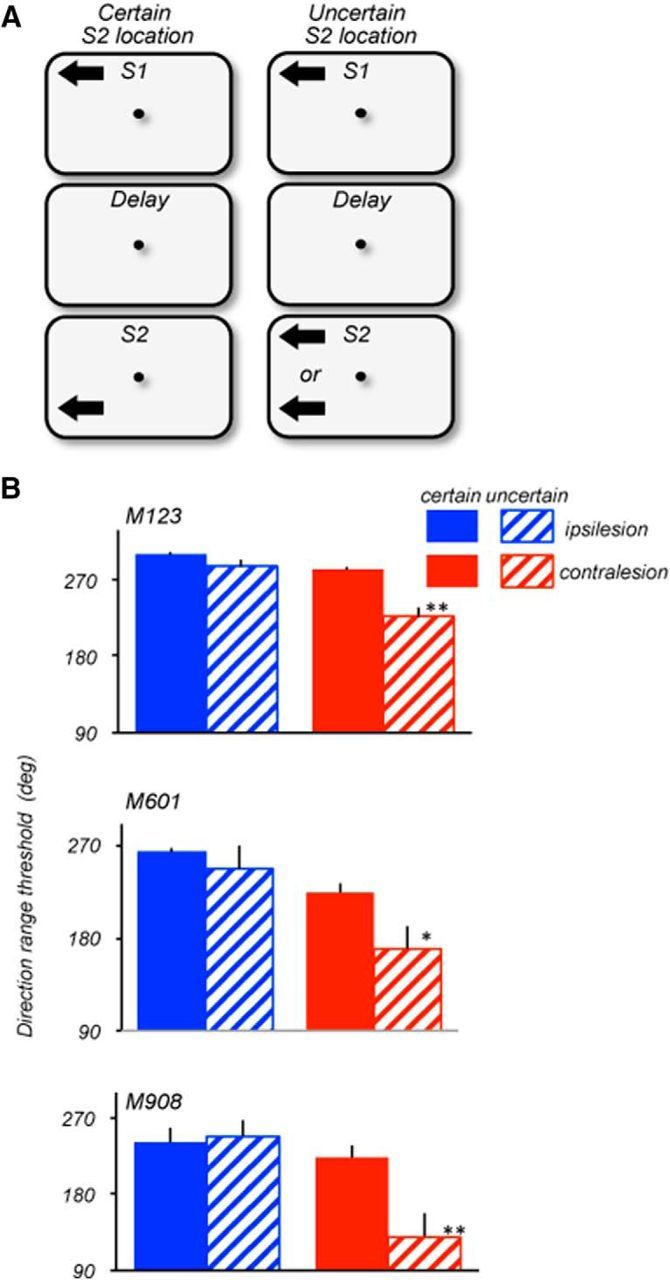Figure 7.

Effects of location uncertainty on ipsilesional and contralesional range thresholds. A, Stimulus configuration during certain (left) and uncertain (right) locations of S2. Stimulus speed: 15°/s (M123 and M601); 10°/s (M908). On trials with certain S2 locations, S1 and S2 always appeared at the same locations within the same hemifield and were separated by 16° (M123; S1: ±8°/8°; S2 ± 8°/−8°), 12deg (M601; S1: ±6°/6°; S2 ± 6°/−6°) and 5° (M908; S1: ±5°/5°; S2 ± 5°/0°). On trials with uncertain locations of S2, S1 always appeared at the same location in the upper quadrant, while S2 appeared with 50% probability at the same location as S1 or in a separate location within the same hemifield. On trials with separated S1 and S2, the distance between them was identical to trials with certain S2 locations (see above). All thresholds were measured with 1.5 s delay between S1 and S2. B, Ipsilesional (blue) and contralesional (red) range thresholds measured in blocks of trials with certain (solid) and uncertain (striped) locations of S2. All three animals showed no significant difference in performance between certain and uncertain blocks of trials with ipsilesional stimuli (M123, p = 0.16; M601, p = 0.26; M908, p = 0.8; two-tailed t test). However, in the contralesional hemifield, the range thresholds were poorer when the location of S2 was uncertain (M123, p = 0.006; M601, p = 0.045; M908, p = 0.018; two-tailed t test). The Welch two-sample t test for the data pooled for the three monkeys also showed a significant effect of uncertainty for the contralesional (p = 0.00015) but not for the ipsilesional hemifield (p = 0.126).
